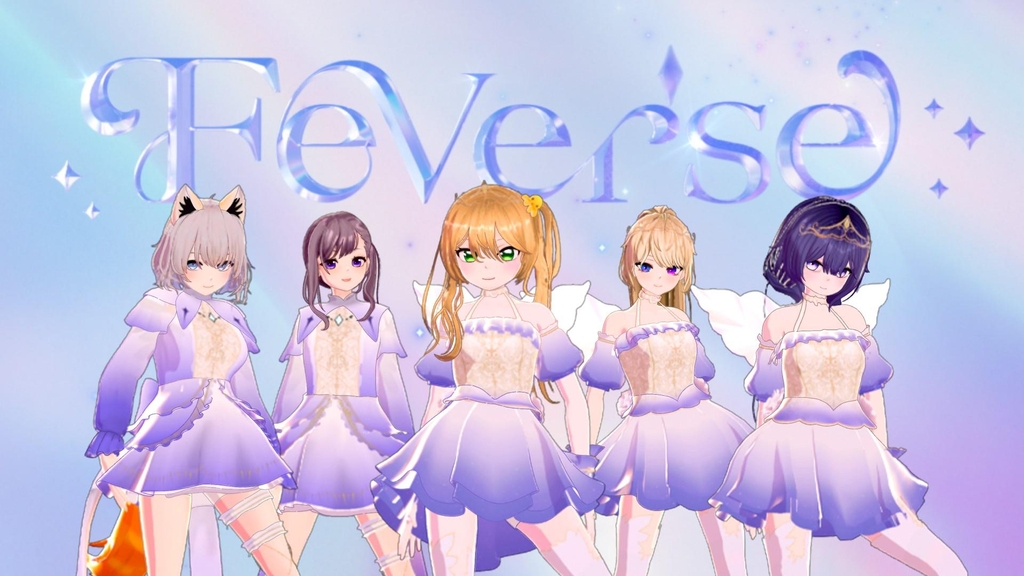SEOUL, July 1 (Korea Bizwire) — Virtual idols have emerged as a new mainstream phenomenon, gaining popularity among Gen Z (born 1997-2006) fandom. Previously considered a niche interest, virtual idols are now capturing the attention of teenagers who are comfortable with advanced technologies like the metaverse, motion capture, and virtual reality (VR).
Experts note that virtual idols are increasingly being accepted as real idols, particularly among teenagers. Leading the way is Isegye Idol, a six-member virtual idol group that debuted in 2021 under the guidance of renowned streamer Woowakgood. Recently, the group has achieved success in various fields, including music and webtoons.
In a remarkable feat, Isegye Idol became the first virtual group to be inducted into the ‘Mellon Hall of Fame’ by the music platform Mellon. Additionally, secondary creations based on Isegye Idol’s intellectual property (IP) are gaining popularity.
Their webtoon “Magical Girl Isegye Idol,” which began serialization on June 21, reached the number one spot on Kakao Webtoon and Kakao Page for an entire week.
The original soundtrack “Lockdown,” released in conjunction with the webtoon, surpassed 1 million streams within 24 hours and earned a place on the Millions Album, making Isegye Idol the first YouTuber group to achieve this milestone.
It’s worth noting that only the top 0.001 percent of albums were able to reach this status in the previous year, with only 27 albums, including those from BTS and I.V., accomplishing the feat.
Despite being a digital single album, I.DOL’s “Lockdown” quickly garnered 1 million streams. The accompanying music video also ranked as the top two trending videos on YouTube on June 24 and 25.
The webtoon has enjoyed immense success, with over 150,000 participants engaging in a pre-booking event to receive special messages and congratulations.

In a remarkable feat, Isegye Idol became the first virtual group to be inducted into the ‘Mellon Hall of Fame’ by the music platform Mellon. Additionally, secondary creations based on Isegye Idol’s intellectual property (IP) are gaining popularity. (Image courtesy of Kakao Entertainment)
The webtoon “Magical Girl” falls under the magical girl genre and features the members of IDOL as the main characters. Kakao Entertainment also released the prologue of another webtoon, titled “Beyond Dimensions,” on June 22, with plans to continue the series. Furthermore, Kakao Emoji, launched alongside the webtoon, topped the rankings for four consecutive days.
Another notable virtual idol group is Feverse, a girl group formed through the survival program “Girl’s Reverse” earlier this year. Thirty former and current idols were cast as virtual characters, who act and communicate within a distinct worldview. Feverse released their debut song “CHO” in May and held a mini showcase.
Other virtual idols include the five-member boy group PLAVE and the virtual human Mave.
Virtual artists have been present since the 1990s, when they were commonly known as “cyber singers” rather than “virtual.” These cyber singers released albums and interacted with fans.

Feverse released their debut song “CHO” in May and held a mini showcase. (Image courtesy of Kakao Entertainment)
The first cyber singer, Kyoko Date, debuted in Japan in 1996. Created by HoriPro, a major Japanese entertainment agency, Date was scouted while working part-time at a hamburger restaurant.
In Korea, Adam became the first cyber singer in 1998. He was modeled after the actor Won Bin and was designed to be 178 centimeters tall and weigh 68 kilograms. Adam exceeded expectations, selling 200,000 copies of his first album and featuring in beverage commercials.
Ryusia, Korea’s first female cyber singer, also debuted in 1998 alongside Adam. After a career hiatus in 1999, she made a surprise comeback in February of last year, 23 years later. Presently, she has a YouTube channel called “Lusia Ryusia,” where she releases songs from her three albums and vlogs.
In the 2000s, cyber singers gradually faded away as the era of idol groups like boy groups and girl groups took center stage, reducing interest in cyber singers.

Rozy made her debut as a virtual influencer, appearing in various commercials for insurance, automobiles, and more.
However, the emergence of Rozy in 2021 rekindled interest in cyber artists. Rozy made her debut as a virtual influencer, appearing in various commercials for insurance, automobiles, and more. She impressed with her appearance, fashion style, and dance skills, leading many to mistake her for a real person. She also released a single album in February 2022.
“This is an unusual case,” commented Jung Min-jae, a pop music critic. “However, it implies that virtual idols are not only accepted by enthusiasts but also by teenagers and young adults without any prejudice, similar to their support for conventional singers.”
Pop culture critic Kim Heon-sik also added, “While millennials may have reservations about virtual groups, Generation Z has embraced them wholeheartedly, forming fandoms and showing enthusiasm, just like they do for traditional singers.”
“I believe that Generation Z’s unbiased and open-minded attitude has contributed to these positive outcomes,” he concluded.
Lina Jang (linajang@koreabizwire.com)






